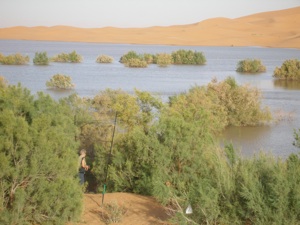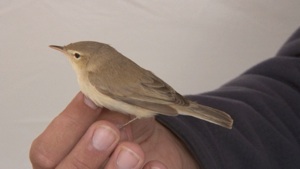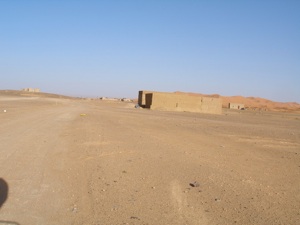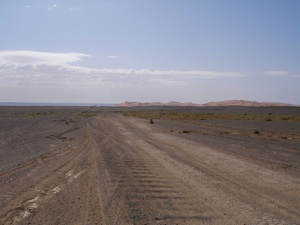birding sites in
Morocco: the deserts
more Morocco sites other destinations the book the DVD e-store
birding sites in
Morocco: the deserts
more Morocco sites other destinations the book the DVD e-store
Wednesday, 24 August 2011
You haven’t seen the deserts of Morocco until you’ve been to the areas around Merzouga. This is ‘classic’ desert complete with sand dunes and camel trains and the best-known place in Morocco for Desert Sparrow and Houbara Bustard. It’s also good for Spotted Sandgrouse, Brown-necked Raven, both Olivaceous Warblers, Desert Warbler, Fulvous Babbler and, at least in some years, Egyptian Nightjar. In relatively wet seasons, temporary lakes form here which support breeding waterbirds such as Ruddy Shelduck and many migrants.
All the sites in this section are treated, in detail and with precise maps and directions, in my book ‘Finding Birds in Morocco: the deserts’
If you have any information which you feel would help to update the book, please email me at dave@easybirder.co.uk and I’ll add your observations to these pages
To view more sites in Morocco’s deserts click here
Merzouga


‘Real’ desert, as seen from the Auberge Yasmina

Next to the Auberge Yasmina are stands of tamarisks that can be fantastic for migrants that have just passed over the Sahara on their way north. These are being studied by Catalan ornithologists who set up a ringing station every spring. In wet years there are also two lakes here which support waterbirds including breeding Ruddy Shelducks.


A visit to the ringing station is great for learning what’s about and how to identify birds such as the two Olivaceous Warblers. The lower bird is a Western Olivaceous Warbler - the one you’ll see in many parts of Spain and Morocco; the upper bird is a race of Eastern Olivaceous Warbler (Hippolais pallida reiseri) which is sometimes referred to as Saharan Olivaceous Warbler. Blimey look how different they are, though I assure you it’s not always that easy.

Currently the best site for Desert Sparrow in this area (site 3 in my book). At least one pair breeds in the wall that is in shadow in this photograph

To reach the auberges you need to go ‘off-piste’. Some of these routes are no longer well maintained so there’s a danger of getting stuck in sand but the maps in my book show routes that are safe, if rather corrugated in places. Travelling on roads such as this gives you your best chance of species such as Spotted Sandgrouse

Flamingoes in the desert? The lake near Merzouga (Dayet Srji) can be fantastic for waterbirds but, again, you have to go ‘off-piste’ to get there.
Updates
March 2011 (D Gosney et al)
The desert lakes were all dry but Dayet Srji still had a pair of Ruddy Shelduck. We had Desert Warbler in the ‘lakeside’ bushes where a Tristram’s Warbler had been seen a few days earlier.
A pair of Desert Sparrows were breeding in a nest box in the tamarisks close to the Auberge Yasmina. Both the male and the female were caught by the ringers and shown to us while we were there.
We also found a Desert Sparrow nest at another Auberge - the Etoile des Dunes. As you face the Auberge with the dunes behind it, there are two water towers on the right hand side; in front of those is a scaffold structure just a few feet high and the sparrows were nesting in one of the pipes in that scaffold - the female was being attended to by two males.
Chris Mills and friends told me of what should be a reliable site for Desert Sparrow for years to come. If you ask at the Auberge Caravane for Boumia Zaid he will be able to arrange a short quad-bike ride into the Erg Chebbi dunes to a ‘bedouin encampment‘ where tourists can sleep in the desert under tents. This site had about 20 Desert Sparrows feeding around the camels
Fulvous Babblers were seen close to the Hotel Atlas du Sable (near Merzouga)
We looked for Dunn’s Lark at the site where they bred last year (just north of the sign ‘Yasmina 9km‘ near site 4 (page 14). We didn’t find any (I believe no-one else was finding them either) but we did get two Desert Warblers.
This time I had booked a guide to show us Houbaras but this year he hadn’t found any so instead he took us to a spot where two Egyptian Nightjars could be seen sitting at their roosts in broad daylight. Many others were failing to see Houbaras but there was a report of one being located by one of the tour groups.